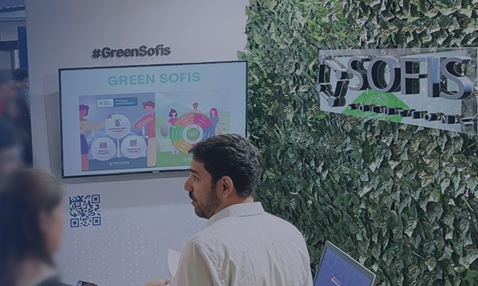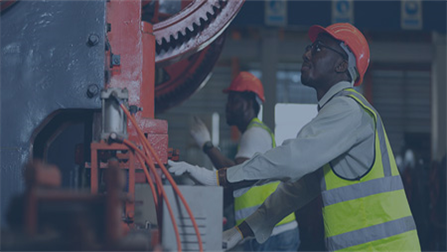Sofis Solutions’ Commitment to Sustainable Digital Transformation
Start Reading

1. Company at a Glance
In this case study, we explore how Sofis Solutions, an Information Technology company based in Uruguay, designed and implemented a company-wide initiative to embed sustainability into its core operations. Through the creation of the GreenSofis methodology, the company integrated environmental, social, and governance (ESG) principles into every stage of its software development process. This case highlights the steps taken to align internal practices with broader sustainability goals, driven by leadership commitment, employee participation, and stakeholder engagement.
Information Technology
Industry
2005
Founded
Uruguay
Headquarters
99
Global Workforce
Operations in Uruguay, El Salvador, Ecuador and Panama
Global Presence
2. The Challenge
Addressing Climate Impacts in the IT Sector
By 2018, Sofis Solutions had been engaged in sustainability efforts for several years, primarily through internal practices and employee-focused actions. However, the company recognized that its potential for meaningful impact would be far greater if sustainability were embedded into its core business model and client-facing solutions. At the same time, internal reflections and industry trends revealed several pressing issues:
- The IT sector's growing carbon footprint—contributing more than 5% of global GHG emissions—highlighted the need for energy-efficient digital solutions.
- A lack of inclusion and transparency in many software development practices risked reinforcing social and technological inequalities.
- Both internal and external stakeholders showed limited awareness of sustainable IT frameworks, presenting a challenge but also an opportunity for leadership.
Externally, demands from international clients—especially in the public and development sectors—called for greater alignment with sustainability principles. Combined with Sofis Solutions’ long-standing participation in the United Nations Global Compact since 2013, these factors accelerated the need for a comprehensive and actionable response.
3. The Action
Steps Toward Sustainable IT Innovation
Strategic Shift and Project Formulation
In 2018, following internal reflections and external trends, Sofis Solutions shifted its sustainability strategy from internal-only efforts to creating broader impact through its clients and solutions. This decision led to the design of GreenSofis, a company-wide initiative to embed ESG principles in software development. The company started by setting up an overarching project and deciding the key sustainability initiatives.
Methodology Design and Integration into Development Processes
GreenSofis is a methodology that helps the company create digital products in a more sustainable, inclusive, and transparent way. It works by applying sustainability principles at every stage of the software development process — from the initial idea to the final product. The method is structured in six steps, and in each one, the team includes actions that support three key values:
Energy Efficiency:
For example, they write code in a way that uses less energy (called algorithm optimization), use a tool called GreenCoder to improve performance, and choose environmentally friendly servers (GreenHosting) to run their software.
Inclusion:
They make sure the software is accessible to everyone — including people with disabilities — by following inclusive design standards, considering digital literacy, and making sure it's easy to use for a wide audience.
Transparency:
They build systems that allow users and partners to track how data is used, promote the use of open data, and include safeguards to prevent corruption or unethical practices.
Internal Engagement Through Annual SDTD Events
The Sustainable Digital Transformation Days (SDTD) were established as the main participatory forum. These annual events:
- Involve all employees across countries
- Allow teams to present current practices, propose improvements, and align actions with ESG goals
- Serve as a space for co-creating the improvement roadmap for the methodology
- Includes other key stakeholders of the company
This mechanism ensures broad participation, team alignment, and continual evolution of the methodology.
Top management, including the CEO, actively led the initiative. Employees were allocated time within regular working hours to develop and implement sustainability actions. Champions naturally emerged to lead specific areas or phases. The company also cond
Top management, including the CEO, actively led the initiative. Employees were allocated time within regular working hours to develop and implement sustainability actions. Champions naturally emerged to lead specific areas or phases. The company also conducted internal training and awareness campaigns to strengthen ESG competencies across teams.
External Stakeholder Engagement and Iterative Refinement
The company presented GreenSofis to clients, partners, and industry peers—collecting feedback, offering support for adoption, and building credibility. Recognition in national contests increased visibility. Annually, the methodology is reviewed and updated based on feedback from external stakeholders, insights from SDTD discussions and evolving sustainability standards and client needs.
Each team involved in the project adapts its phase-specific processes to embed these principles, ensuring operational integration.
4. Overcoming Barriers
Financial Constraints
Initially funded entirely by internal resources, stretching budgets. Financial constraints were addressed by prioritizing high-impact actions and demonstrating long-term value.
Cultural Resistance
Stakeholders intially undervalued sustainability. This was overcome through persistent sensitization and showcasing tangible outcomes.
Leadership Response
The CEO and champions maintained momentum with clear objectives and participatory forums like SDTD.
5. Impacts & Results
By 2024, 48% of the services were delivered using the #GreenSofis methodology, almost doubling the original 25% target.
There was also a 15% reduction in application energy consumption.
Additionally, 30% of code was improved under GreenCode criteria.
100% of the company’s hosting services transitioned to GreenHosting practices.
Client-hosted services saw a 20% increase in sustainable hosting.
Cultural Shift
Sustainability has become fully embedded in company culture, now perceived by employees as a living value integrated into day-to-day work. Participation in the Sustainable Digital Transformation Workshops (JTDS) remained steady, with 50-70% of collaborators engaging annually, and a consistent number of them actively presenting initiatives to evolve the methodology.
Operational Strengthening
Through GreenSofis, the company formalized and certified processes related to sustainability, anti-bribery (ISO 37001), and environmental management (ISO 14001). This structure enhanced continuous improvement cycles and enabled the standardization of sustainable software engineering processes aligned with ESG principles. Innovation alignment with the SDGs reached 100%, maintaining this level since 2022.
Commercial Impact
The company significantly increased its ability to secure contracts with international organizations that prioritize or require sustainable practices. Long-term agreements with these organizations doubled.
Recognition and Visibility
In 2022, the CEO was named SDG Pioneer for Decent Work by the United Nations Global Compact.
6. Key Lessons Learned
Sustainability initiatives must come from all stakeholders and be led by management with clear messages and concrete objectives.
To achieve an adequate strategy it is important to sensitize all involved parties from the beginning, to be transparent and use recognized standards (e.g., ISO certifications, UN Global Compact) ensures credibility and measurable progress.
Focus early on specific, communicable objectives to align teams and stakeholders effectively. Consistent communication and integration into processes make sustainability a lived value, not just a goal.
7. Resources
Sofis Solutions is an active participant of the United Nations Global Compact since 2013, including:
Participant of SPARK programme for SMEs
Forward Faster signatory in Gender, Living Wage and Climate targets.
Recommended UN Global Compact resources available to support your journey:

